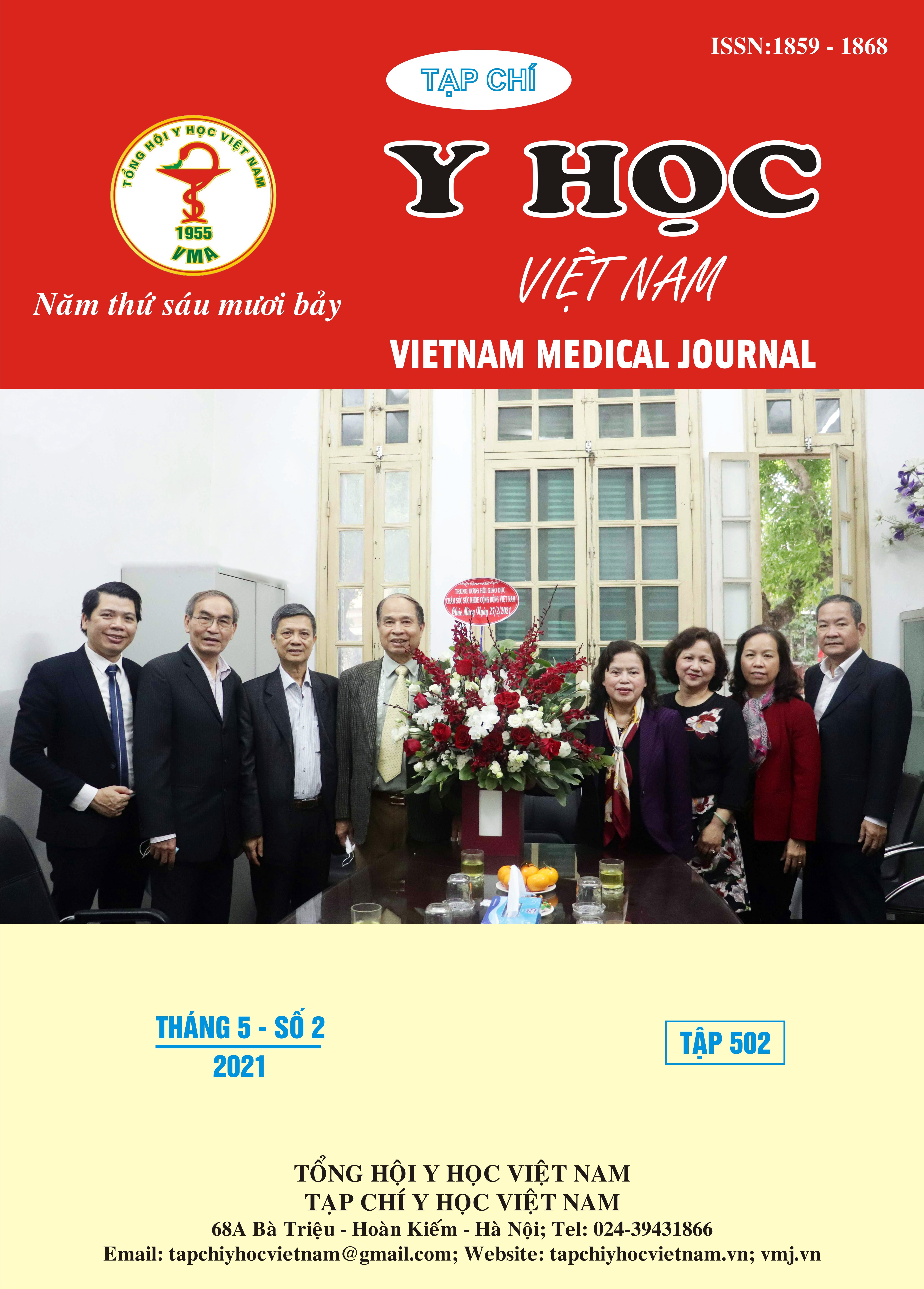RESEARCH ON CHANGE OF VOICE IN PATIENTS AFTER AMINOLOGY TREATMENT
Main Article Content
Abstract
Tonsillectomy is one of the most common types of surgery in the ENT, accounting for approximately 2.3%-26.9% of all ENT surgeries. The removal of the tonsils more or less changes the size of the throat cavity and affects the stages of voice formation, including vocalization and resonance. Around the world, the study of voice changes after tonsillectomy has only been studied since 1994. Since then, a number of studies have been conducted showing that voice quality has changed in varying degrees after tonsillectomy. The study was conducted on 35 patients who underwent tonsillectomy at the National Hospital of Otolaryngology, and analyzed their voice before and after tonsillectomy using the PRAAT sound analysis program. Results: Age: 6- 18 years old: 62.3%, over 18-25 years old: 23.6%, over 25 - 55 years old: 11.3%; over 55: 2.8%. Male 56.2%, female: 43.8%. reasons for tonsillectomy: inflammation more than 07 times/year 54.7%, due to snoring 19.3%, bad breath 9.7%, due to throat obstruction 16.3%. Grades of tonsils: I (21.9%), II (31.1%), III (34.3%), IV (12.7%). Voice: Vowel pronunciation before tonsillectomy: neutral tone (Shimmer index 3,251, Jitter 0.984%, HNR 18,003), after tonsillectomy: neutral tone (Shimmer index 3.336, Jitter 0.965, HNR 19,115), ; Before tonsillectomy, nasal consonants, lingual, obliterated, base of tongue, voiceless; turn on steam; have indicators of sound quality: Shimmer, Jitter, HNR within normal limits; Voiceless tongue root rub consonants: Shimmer:3,991, Jitter: 1,231, HNR: 21,002; laryngopharyngeal rub: Shimmer: 3,921, Jitter: 1,312, HNR: 21,004; After tonsillectomy: nasal consonants, occlusion, tongue base, voiceless; rubbing the base of the tongue without a sound; laryngopharyngeal rubbing; have indicators of sound quality: Shimmer, Jitter, HNR within normal limits; Consonants: lingual, Shimmer:3,892, Jitter: 1,114, HNR: 21,004;: inflatable: Shimmer: 3.921, Jitter: 1.102, HNR: 20.006. After tonsillectomy: vowel: neutral (Shimmer 25dB, Jitter 1.859%, HNR 19,115). Nasal, blocked, tongue-rooted, voiceless consonants; rubbing the base of the tongue without a sound; laryngopharyngeal rubbing; have indicators of sound quality: Shimmer, Jitter, HNR within normal limits; Consonants: lingual, Shimmer: 3,892, Jitter: 1,114, HNR: 21,004;: inflatable: Shimmer: 3.921, Jitter: 1.102, HNR: 20.006. The formants: F1, F2, F3, F4 all changed compared to before tonsillectomy. Tone: horizontal tone: unchanged: F0-15: 1.8, F0-20: 1.9, F0-35: 2.4 question tone (breathing voice). F0-15: +1.6, F0-20: +1.1, F0-35 +1.4.
Article Details
Keywords
after tonsillectomy, PRATT program, Shimmer index, Jitter, HNR, tone, formants
References
2. A. V. Chuma, A. T. Cacace, R. Rosen et al. (1999), "Effects of tonsillectomy and/or adenoidectomy on vocal function: laryngeal, supralaryngeal and perceptual characteristics", Int J Pediatr Otorhinolaryngol, 47(1), tr. 1-9.
3. O. Erogul, B. Satar et all. (2002), "Effects of tonsillectomy on speech spectrum", J Voice, 16(4), tr. 580-6.
4. C. B. Heffernan, M. A. Rafferty (2011), "Effect of tonsillectomy on the adult voice", J Voice, 25(4), tr. e207-10.
5. Ł Potępa, J. Szaleniec, W. Wszołek et al. (2014), "Analysis of Voice Modifications for Persons After Tonsillectomy", Acta Physica Polonica A, 125, tr. A-49.
6. S. Sandeep, C. Shilpa, T. S. Shetty et al. (2019), "Voice Analysis in Post Tonsillectomy Patients", Indian Journal of Otolaryngology and Head & Neck Surgery, 71(1), tr. 312-317.
7. R. Mora, B. Jankowska, F. Mora et al (2009), "Effects of tonsillectomy on speech and voice", J Voice, 23(5), tr. 614-8.


